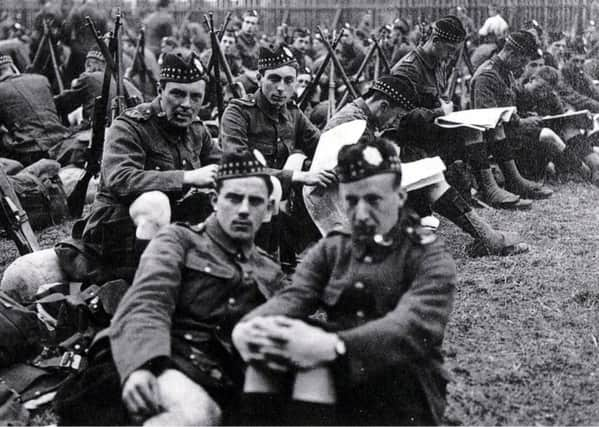The Royal Scots bring history into the present with digital archive


The young soldier is one of 11,313 names memorialised on The Royal Scots digitised Roll of Honour that has been collated in honour of the centenary of the end of the First World War. Colonel Martin Gibson is the commander of the larger digitisation project, of which the roll is the first stage, which will eventually see the whole of The Royal Scots archive online. He said: “We are immensely proud of the Regiment’s record in the First World War. What we’re trying to do is to make information not readily available more accessible.”
The interactive list details where each soldier is buried, their date of death, birthplace, rank and service number, and includes a map of the world showing the origin of each man. Colonel Gibson said: “We’re trying to bring the sacrifices these men made to life and to reach their descendants and people interested in the Great War.”
Advertisement
Hide AdAdvertisement
Hide AdMore than 100,000 Royal Scots fought in the Great War - enough to fill Murrayfield Stadium twice over, with 46,000 of those wounded as well as the 11,313 who died. The death toll is expected to rise, says Col Gibson, the more research done and he hopes that relatives of fallen men not recorded will contact the project to have them added.
The roll went live last Friday and on that day alone received 800 virtual visitors.
The Royal Scots Regimental Trust is working in partnership with computer science boffins at St Andrews University, the Commonwealth War Graves Commission and the Scottish National War Memorial Committee on the project that is expected to be completed within ten years, so vast is the regiment’s archive currently housed within Edinburgh Castle. The collection is made up of newspaper cuttings, letters, photographs, uniforms, medals and other “emotive” items that have been seen by only a few eyes.
Raised in 1633 by Sir John Hepburn, the oldest regiment in Scotland was instrumental in British military service until it was merged with eight Scottish infantries to form The Royal Regiment of Scotland in 2006. Col Gibson, who was the Commanding Officer of the 1st Battalion of the regiment for three years of his 30 year army career, said: “The Royal Scots have a unique story widely recognised as having national significance to history. We want to create an enduring legacy and safeguard our rich heritage.”
He hopes that the new project will keep the stories of the men, like the 228 from the 7th (Leith)Battalion who perished in the multi-train rail crash near Gretna Green in 1915, alive.
He said: “We want to ensure that every man who died wearing The Royal Scots cap badge is never forgotten.
“They were such a huge part of Scotland’s history.”